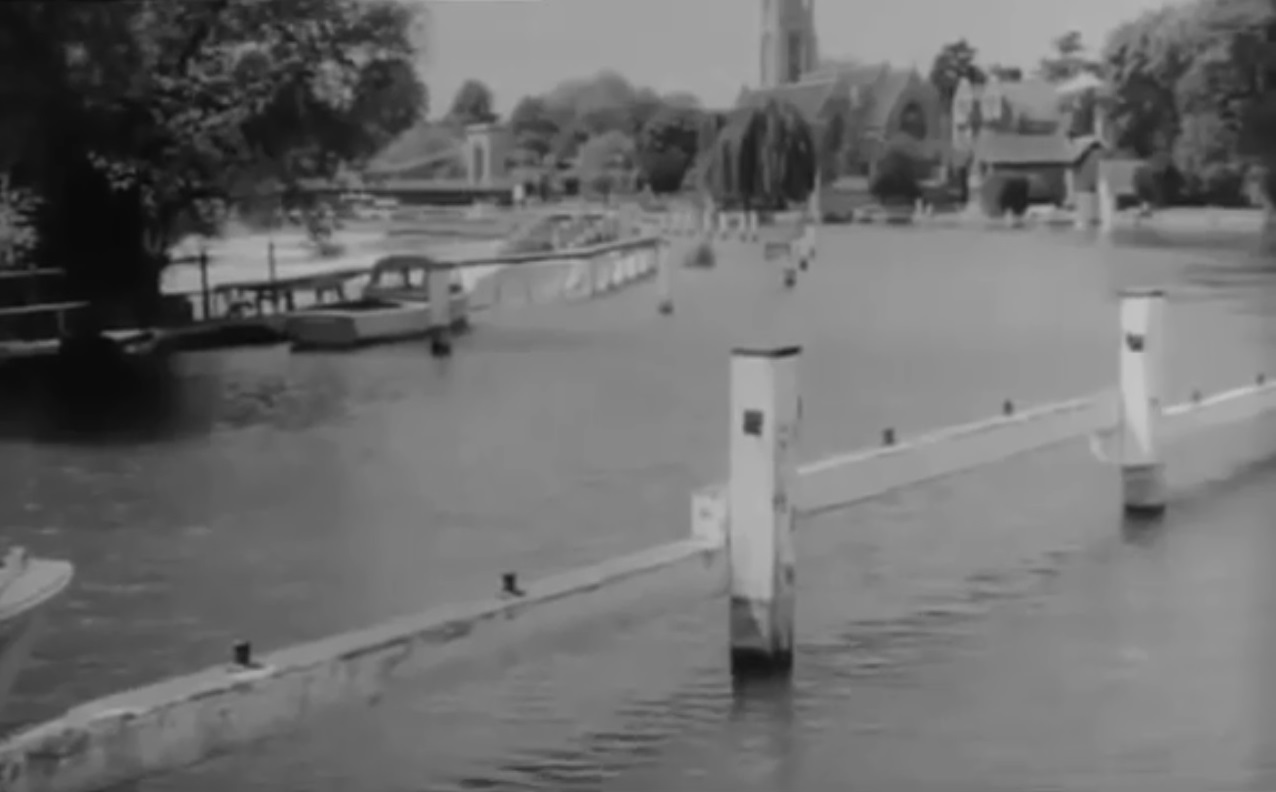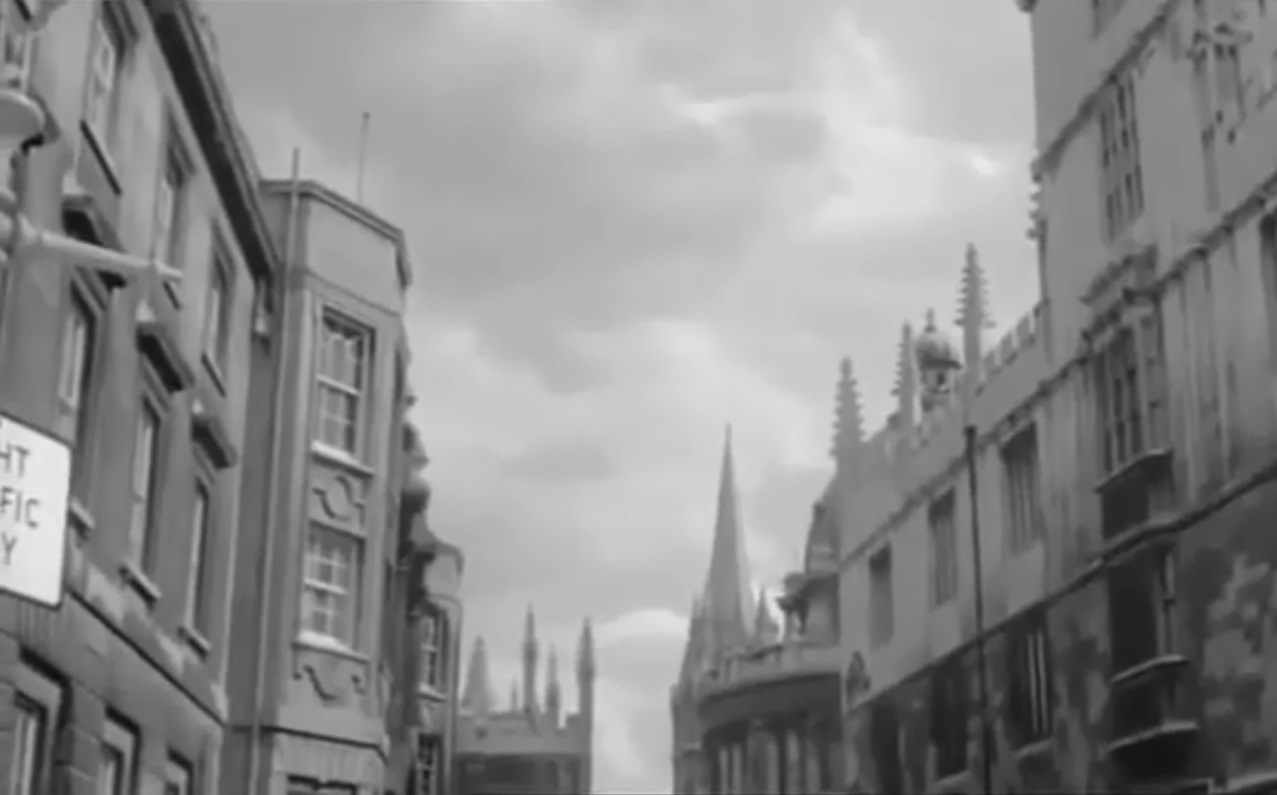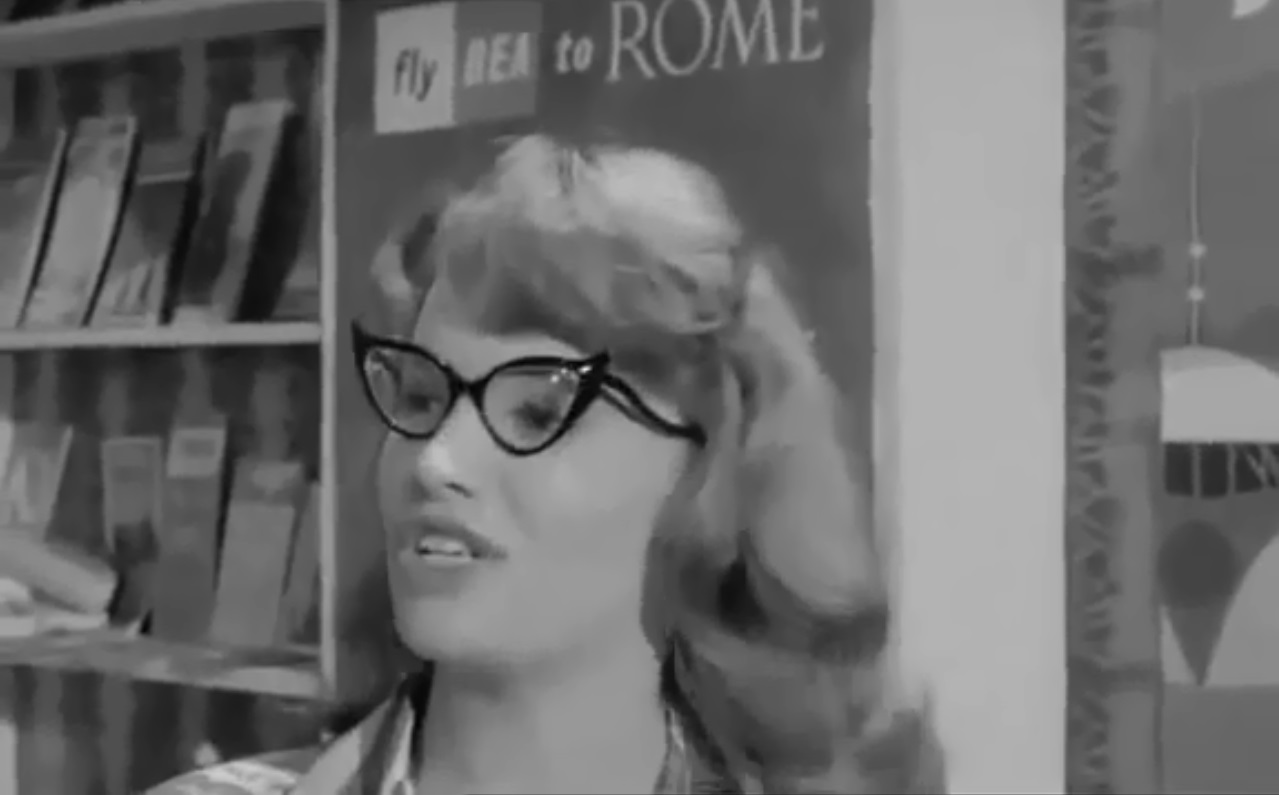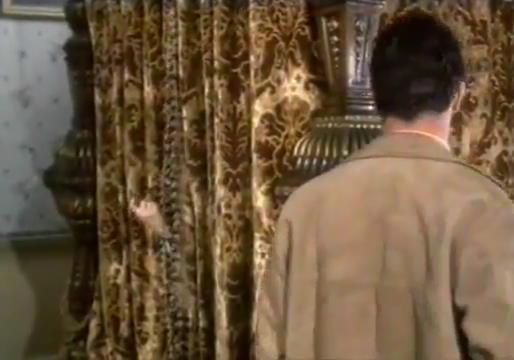Marriage of Convenience
The phony
marriage that is a prison break, another by blackmail, and finally the real one
with handcuffs.
An Edgar Wallace
Mystery.
The Sinister Man

A poem on the river
in the morning light, a journey to the Parsons Green lock. “Murder
victim found in Thames” is the London cry.
Kytang, west of Big Brother, evidence of civilization. The assassin in the title. To
Oxford, where the dead man was head of the College of Oriental Studies.

“Who’d
be in the hire business? They turn up dressed as
though they’re ready to sail the Cutty Sark herself, and they couldn’t steer a toy boat
in a bath.”
“Oh, don’t
be too hard on ‘em, Dad. It’s
their honeymoon.”
“Well, that’s
no excuse for steering a cruiser into the bank.”
“Yes it is.”

The juxtaposition
of kempo
and a Rolls-Royce is a presentiment of Hamilton’s Goldfinger and no mistake. Question of
sale to an out-of-town buyer, so to speak, “they have an expanding economy.”
The seal is set
with a “rousing randori”
from Frank Lloyd’s Blood on the Sun.
An Edgar Wallace
Mystery.

The Caretaker
The structure is
a recomposition of The Dwarfs for effect, the theme
is identical, also with Buñuel’s Viridiana.
The filming is
very accurate on location. A preparatory joke credits the financial
contributors, extraordinarily.
Nothing but the Best

The scion of the
firm is a chevalier d’industrie,
he dies (“strangled by the old school tie” or a certain lady of
Durban, the landlady) in the “ambitious yob”,
a backward boy, the boy in the man, the brother in the husband, etc. (cf. What’s New Pussycat?, Alfred the
Great).
On a theme dear
to the poets from Robert Frost to Dylan Thomas and Howard Nemerov, a masterwork
of the British cinema, by Raphael out of Ellin, Roeg
cinematography, Grainer score.
A.H. Weiler of the New
York Times was plurally amused, “a carefree, cocky
comedy blithely seasoned with murder that is both biting and debonair and,
above all, entertaining.” Variety, “stylish... sly,
penetrating... ruthless”. Film4,
“cynical
and morally ambiguous”. Time Out, “witty script... tricksy direction”. Hal Erickson (All Movie Guide) has the plot somewhat
muddled but the sum total is “sparkling”. Halliwell’s Film Guide, “hard, skilful, rather
unattractive”.
What’s New Pussycat?
The general style
is so brilliant that small local structures tend to go unnoticed, like Victor
and Carole onstage at the Crazy Horse after hours when M. Lefebvre wanders in
drunken and jealous. Marvels like this occur throughout, so many individual
compositions that from another point of view the general structure is lost.
“The worst
curse in life is to be mediocre,” says the Paris fashion editor, who
wants to emulate Hemingway by forsaking journalism for fiction. His dilemma is
an impending marriage Carole insists on, he loves a stripper at the Crazy Horse
who writes verses like these, “Who killed Charlie Parker? / You did, you
rat!”, all the while maintaining her status as a
self-described semi-virgin, “here I’m a virgin, in America
I’m not,” and overdosing on sedatives.
He also loves
Mme. Lefebvre, beloved of his psychoanalyst vainly.
Victor plays
chess with an Existentialist mademoiselle outside La Closerie des Lilas, cheats
and gets caught. He dresses the girls at the Crazy Horse, one in a suit of
armor and one in a bridal veil, for twenty francs a week, “that’s
all I can afford.”
Dr. Fassbender is
married to “the creature that ate Europe,” Victor lives in a
semi-artistic garret. A Viking funeral and a birthday party unite these two on
a Paris quay by way of Chaplin’s City
Lights. A “pussycat from the sky” descends upon the editor in
his motorcar and he nearly capitulates, but in a spirited mêlée he takes his
bride to him and away.
Shakespeare is
thought to be Schiller by the psychoanalyst, whose resemblance to Jed Harris
provokes a dream of Olivier’s Richard III. “Your face is
like the autumn moon!” is the salient line in a Cyrano scene.
Here We Go Round the Mulberry Bush
The great comedy
of an English lad seeking a safe harbor for his genius ends not with Mary at
the boatel, after Audrey at the furniture store (“Perring Flair”)
and Whoozis at the family manse and Whatzit at the church bazaar and
“runny” Wherezat, but off into the chilly precipices of university,
where they don’t know what’s what, necessarily.
Reviewers were
mainly befuddled in the extreme, Renata Adler of the New York Times leading the pack, followed by Ebert of the Chicago Sun-Times, Halliwell’s Film Guide and the Monthly Film Bulletin, all reputable institutions.
Variety
noted “a nimble alertness” and “a nice flair”, Tom
Milne of Time Out Film Guide finds it
“so charmless as to be almost unwatchable.”
Alfred the Great
The major theme
is an effective analysis of Pascal’s Major Barbara on the Danish
invasion of Britain, the minor is the metamorphoses of the young king who initially
desires to be a priest, this is carried on with more or less evident comparison
to Bergman’s Wild Strawberries and was particularly opaque to
Vincent Canby, who described this aspect of the film as “Christian
Freud” and said in summation, “Donner has no genius” (New
York Times).
Critics have been
generally averse, “hasn’t the power or the passion to be a lavish
historical epic” (Variety), “a dispiriting, disunified
whole” (Halliwell’s Film Guide), and from Time Out Film
Guide, “a curiosity.”
Rogue Male
The work is
essentially the same as Lang’s Man
Hunt with an abstraction of the female lead, yet it is quite analytical at
the same time and, filming in color, follows a taut line in the drama of
“a pot at Hitler” that sends the hunter literally to ground in
Dorset, noblesse oblige. “I
wanted to know if it could be done.”
The terms of this
silence are finally broken by Herr Hitler, who never needed an excuse anyway.
Raphael &
Donner have the brisk opening sequence of grouse shoot and impromptu boar hunt
whisked under the tablecloth with a furtive hunter lining up his shot at Adolf mit Eva for luncheon on the terrace.
After the tortures and left for dead, the hunter meets a German angler, a
fellow sportsman.
Major Quive-Smith
reads the hunter’s book to know his quarry and the best rules for
catching it (this is John Standing in the second lead, Peter O’Toole is
Alastair Sim’s nephew, Harold Pinter is O’Toole’s attorney).
The Nude Bomb
KAOS has a plan to
deprive the world of fabric and force every man, woman and child to wear the
latest Saint-Sauvage creations, made of permafin. Plus, the UN has to pay ten
billion a month rent.
The villain has a
cloning machine to provide seamstresses. And so it goes,
a work of genius by the masters of the series, a James Bond parody that
includes a chase through Universal Studios on tour trams, another through
Pershing Square with Smart behind his high-powered desk, and
Saint-Sauvage’s Thimble Mountain laboratory and missile base, where the
cave entrance is sealed with a zipper.
The consequences
fall to Altman in Prêt-à-Porter. Agent 86 is no longer employed by
CONTROL but at least for the nonce is working in the PITS (Provisional
Intelligence Tactical Service).
Charlie Chan and the
Curse of the Dragon Queen

The Lupowitz Case, involving Chan’s half-Jewish grandson,
a shlemiel with a private dick’s office in
downtown San Francisco.
“I got the
mayor on my back and I got the governor on my back, I’ve got the goddamn
Gay Citizens for Safe Streets Committee on my goddamn back, and last night the
PTA was on my lawn throwin’,” here the
hypochondriac police chief’s ulcer assails him, “rocks at my
house... now, ya think I don’t want the goddamn Bizarre Killer caught? Whaddya think I want him to do, go free for Christ’s sakes? I want him caught as much as you do! Now, ya want a goddamn statement
for your goddamn papers? OK, here’s my statement, NO COMMENT, ya got
that? Now leamme alone! Get out o’ here!”
The great
Honolulu detective addressed the initial murder on the islands years before
(newspaper subhead, “CHAN SOLVES FORK IN TEA CUP CLUE”) and put the
titular villainess away, now he is called again from retirement. Lee Chan, Jr.’s two college pennants, Shanghai and Yeshiva,
recall the bonnie cosmopolitanism of Ozu’s prewar university students (Fighting Friends), as the chief’s ad hoc press conference suggests Mel
Brooks’ High Anxiety (“here’s your paper!”) and
Louis Malle’s Atlantic City
(“not on my turf!”).
“Probably take longer to read file than to solve case,” says
Charlie Chan of the latest spree.
“Good
lesson for young detective,” he tells the shlemiel,
“when faced with the obvious, look elsewhere.” Case of a jealous
mistress in Hawaii, and a curse “to the third generation.” The lad
is full of emulation at least, as Andrew Marvell would say, it must be curbed,
“detective disguises mean that you, as detective, must disguise self. Does not mean that you must disguise self as
detective.”
Donner and his
writers are graduates of Hal Roach’s school, Stan Burns in excelsis,
“look at this crummy neighborhood... you could walk fifteen blocks and
never leave the scene of the crime.” The influence of Zucker-Abrahams-Zucker’s Airplane!
(where the jive translator is an homage to Chan the linguist) is at Club
Shanghai, also Maté’s D.O.A.,
visibly. Every pimp in town takes to wearing Chan’s three-piece tropical
suit. “So glad they’re not all detectives.” The frontal
attack comes in Golden Gate Park. “Chan, curse you!”
“Charlie
Chan’s old enemy, Dr-agon Queen!”
Needham’s Smokey and the Bandit
is well-studied in the paroxysmal chase through the park from the riding
academy to the sea accompanied by the overture to Hérold’s
Zampa, ou La
Fiancée de marbre. “Charlie Chan Film
Classics Today” at the Eltinge Theatre in
Chinatown, implying most obscurely Mickey Spillane (Vengeance Is Mine). “Happy Birthday Dear Doggie,” the shlemiel and his vacuous bride sing to save their lives, a
good long way from Godard’s Adieu
au langage. Modest lad save life of “humble
detective”.
The butler
Gillespie’s arrival at the theater in his motorized wheelchair manages to
suggest both Casino Royale
(dirs. John Huston et al.) and Blazing Saddles (fearful Mrs. Dangers in
a maid’s outfit is from Rebecca,
as Canby lamented), and later Kubrick’s Dr. Strangelove.
“Bizarre
Killer someone in this room.” The murderer’s confession backstage
plunges the work into the kabuki
realm of Fritz Lang’s Dr. Mabuse, a fitting psychological evaluation and
something of a tour de force.
“In one day I had gone from being a popular society” so-and-so
“to being this little” such-and-such “involved in something
squalid.”
“Look like
your plan have failed.”
“—Oh?
Damn.” A gesture in
Welles’ direction (The Lady from
Shanghai) sets off the finale, a colloquy with the screen remembered in
various ways by Woody Allen in The Purple
Rose of Cairo and Manhattan Murder
Mystery...
Vincent Canby of
the New York Times, who considered
Chan amongst “the pre-World War II pop artifacts... dispensing wisdom that came
straight from domestically manufactured fortune cookies,” nevertheless
acknowledgeded in this instance “a
consistently witty point of view,” so much for that. TV Guide, “mindless direction and
stereotypical portrayal”. Dave Kehr (Chicago Reader),
“camped-up”. Time Out,
“a blandoid pastiche”. Halliwell’s Film Guide,
“somewhat elementary”.
Oliver Twist
The most brutal and
authentic version, almost but not quite an unremitting horror, minces no
epithets and pulls no punches, and so we nearly have George C. Scott’s
Shylock.
“In a
previous television foray into Dickens territory,” O’Connor of the New
York Times mentioned while writing of Donner’s A Christmas Carol,
“Mr. Scott took an embarrassing flop on a curiously perverse
interpretation of Fagin in Oliver Twist.
In trying to make the nasty old moneylender sympathetic, Mr. Scott ended up
queasily with something of a dirty old man.” This is a bizarre
evaluation.
Time Out Film
Guide also took great exception to
the film as “nothing very original”.
The Scarlet Pimpernel
A tale of the
“New Order”.
The main advantage
accrues to Donner simply by timing, his original was filmed between the wars,
he follows Powell & Pressburger in this.
The lady is on
the stage of the National Theatre. Sir Percy has insufferable good clothes.
Chauvelin is a toady of the regime.
A Christmas Carol
The peculiar
characterization is rationally constructed on two points, that Scrooge is
simply a businessman, and that he suffered as a boy, thus a hard stinted man
who finds Christmas a humbug, suffers the visitation and recognizes in Tiny Tim
a fellow sufferer, a complete analysis is therefore offered, the nightmare
makes perfect sense.
John J.
O’Connor of the New York Times almost saw this but for the
trappings, which he found admirable nonetheless.
Dead Man’s Folly
A three-ring
circus on the grounds of Nasse House (cf.
Hal Roach’s Road Show),
comprising the mental difficulties of a British scientist with an iffy past,
the hallucination produced by this, and an artistic variant. The ringmaster is
Ustinov as Poirot.
Sir George Stubbs
is the projection of a mind in crisis, Renoir’s La Règle du jeu figures in a bracelet’s lost charm.
Donner handles
the affair as magisterially as Christie’s detective. Fellini’s Ginger e Fred has an image concurrent
with Ariadne and Poirot at Harrod’s.
Babes in Toyland
A very hard,
brilliant satire. Donner goes to Munich (like Mel Stuart for Willy Wonka
& the Chocolate Factory) in a very close approximation of the Meins
& Rogers version, the Toyland set is outdoors, however, and there are many
differences attendant upon Zindel’s construction of the teleplay as a
dream.
There is a
blizzard on the way to Cincinnati, a girl who works in customer service at a
toy store leaves her job after an altercation with the boss. Her boyfriend and
another stock clerk also go, and the girl’s sister (the boss is a
lecherous moneygrubber who, when it’s suggested that he close in advance
of the blizzard, responds that it’s his biggest night of the
year—Christmas Eve—and “are you crazy?”). There is an
accident on the road, the sister is knocked out and sees them all in Toyland.
She flies through
the air and lands in a cake. The boss is Barnaby, about to wed Mary Contrary
Hubbard, beloved of Jack Nimble, Jr. Georgie Porgie works at the Cookie
Factory.
Barnaby wants to
own Toyland and make some changes. The eye of his pet creature shows him all
things. He rules the trolls in the Forest of the Night. The Toymaster has a
bottle of distilled evil safely corked on his shelf. One of Barnaby’s
henchmen, Zack or Mack, looks like Murnau’s Nosferatu.
The crux is put
as “believing in toys”, the main artistic problem, solved by Donner
in two quick shots of candle-powered whirligigs and a row of stuffed
playthings. The go-cart chase in What’s New Pussycat? is evoked
with flowered versions.
It starts out
like a protest against the conglomerates sacking Hollywood, and might early on
have been signed Alan Smithee to great effect. It rises to the height of
inspiration and sinks back again.
The kids are
fine, Mulligan is a great genius working with Donner, Brennan delivers the
goods. The teddy bear policemen and Mother Goose and all have their incidental
purpose relative to the theme.